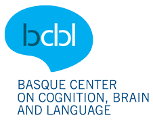Abstract
This study investigated the brain circuits involved in socially-mediated oral production in humans. Participants were asked to recite a poem in the MRI scanner, addressing their lover, an unknown person or no one. The addressee condition was created by depicting, during poem recitation, a picture of the lover, an unknown person or a house. The results reveal changes of brain activity in the anterior neural pathway, as well as in the language circuitry when participants recite a poem to a lover. This study opens a novel line of research on socially-mediated oral production, revealing drastic differences in brain activation when performing the same oral production task in different social contexts. Interestingly, it is known that the analogous avian anterior neural pathway of the zebra finch brain is also differentially activated when the bird sings facing a [potential] mate. Thus, this study suggests that despite important phylogenetic differences, oral production in humans is based, as in songbirds, on a complex neural circuitry which is modulated by evolutionarily primordial aspects such as the social relevance of the addressee.

